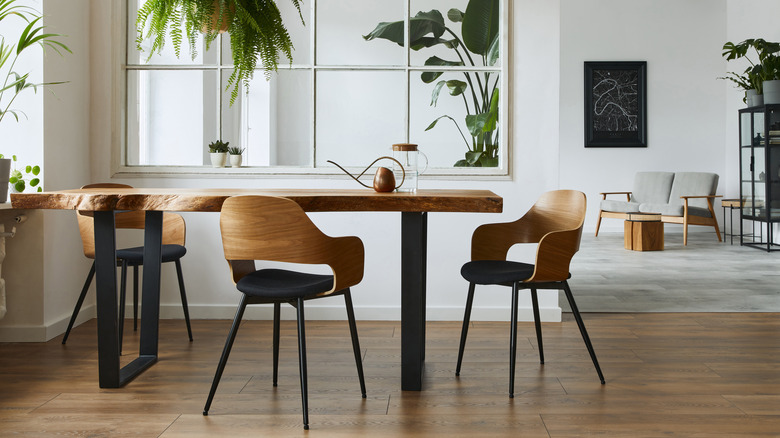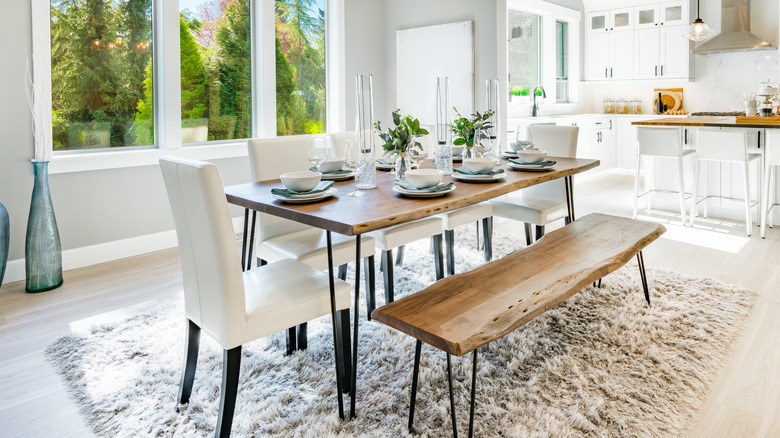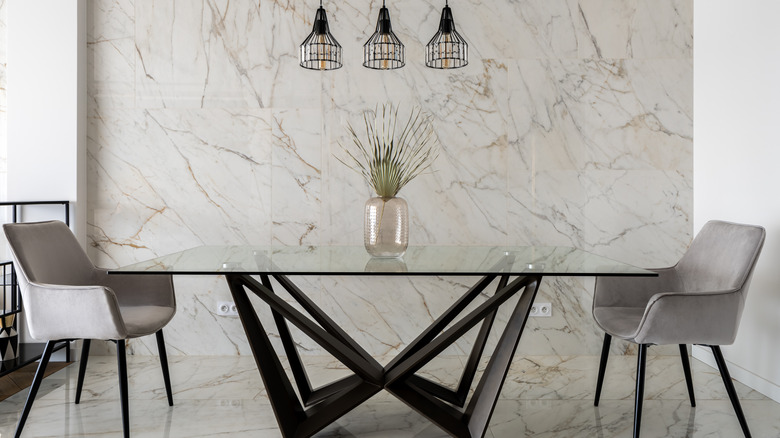How To Find The Perfect Size Dining Table For Your Space
Furniture shopping is not for the faint of heart. Not only do you need to be clear about what you need, but you also have to have the vision to see how a piece might work within your space. And if you're starting fresh, you also need to figure out how the various pieces of the furniture puzzle will eventually fit.
Most dining tables measure between 28 to 32 inches high, and the table's height is dictated by the type of dining chairs you choose, explains Mor. Unfortunately, that's the only break you're going to get because dining tables also come in a plethora of styles and sizes, so it is important to consider your needs before you make a purchase.
Lumens says as a first step, you'll need to decide whether your dining area will be used for regular family dinners or just special occasions. You'll also want to decide whether the table will be used for other activities like meal preparation or homework. Materials like solid wood, glass, metal, and marble are better suited to more formal dining spaces, while tables made with laminate, or a man-made material like molded plastic are more likely to be child- and pet-friendly.
Numbers matter
Once you've decided how the table will be used, it is important to work out just how much room you have to play with before you commit to a particular size or shape, especially since, as The New York Times points out, dining tables can be bigger than they might appear in the showroom. New York-based interior designer Lucy Harris says it is important to place the table so it has what she calls breathing room — that is, the area where someone can pull out a chair and sit comfortably — which works out to about three feet. So to work out how much space you need to dedicate to your dining table, measure out the area where the table is meant to be, then add six feet to the table's width and length.
From there, Raymour & Flanigan says you need to consider the number of persons that live in your household because everyone is likely to want to sit at the table. If don't have the room to get the size you need, choosing an expandable dining table that comes with leaves or extensions will allow you to expand your seating capacity to include guests with little fuss.
Consider shapes and bases
Finally, you can think about what shape you want your table to be. While most people choose to go with the more traditional square or rectangular tables, round or oval tables are good choices too, especially because they offer some flexibility. As Harris tells The New York Times, round or oval tables have no head or foot, and they are slightly more forgiving so you can squeeze more chairs in. Raymour & Flanigan also suggest that round or oval tables work best in small spaces.
As a last consideration, you'll need to look at the base of the table, which can either be held up by legs, a pedestal, or a trestle support base. Dining Furniture Showcase says the placement of a table's legs has a bearing not only on how a table looks but how many people will eventually be able to sit around it.


